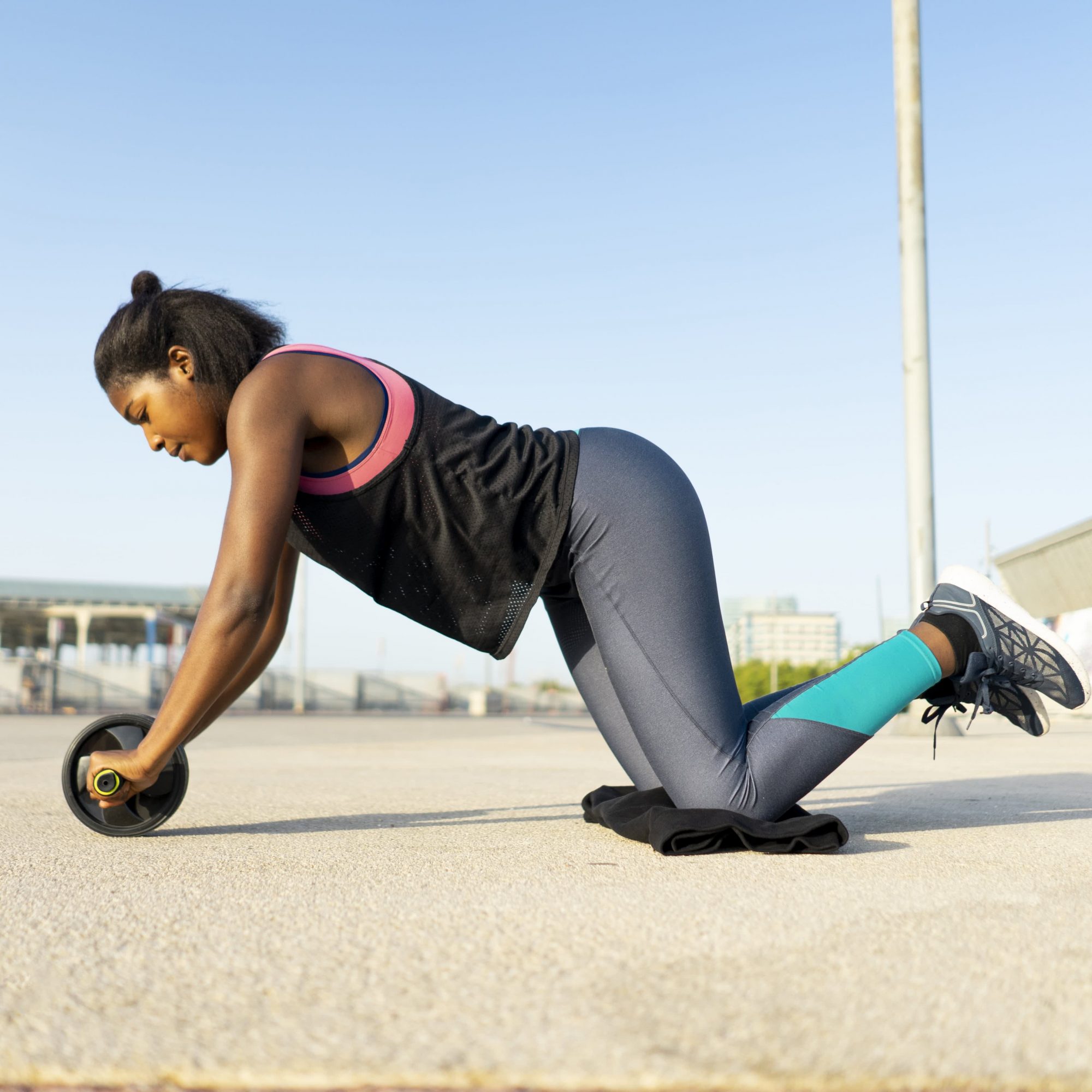
- POPSUGAR Australia
- Fitness
- How an Ab Wheel Helps With Core Strength and Overall Stability
How an Ab Wheel Helps With Core Strength and Overall Stability

While there are more than enough ab workouts out there to keep your core busy, nothing quite compares to the intensity of ab wheel exercises. When used correctly, an ab wheel can work several muscles simultaneously, toning your core and your arms. Not bad for such a small piece of equipment! POPSUGAR spoke with certified trainers to learn how the ab wheel works and what you should know before incorporating it into your routine. They also shared some tips for next-day soreness, because this small-but-mighty tool is going to ignite your core.
What Are the Benefits of Using an Ab Wheel?
The rollout exercises done with an ab wheel can help improve core strength, stability, and balance by engaging several muscles at once. “The ab wheel works a number of muscles, including your rectus abdominus, erector spinae (back muscles), transverse abdominis, chest, and bicep muscles,” Caitlin Tibbitt, an NASM-certified personal trainer in Canada, tells POPSUGAR. And “because the ab wheel works more than just your core muscles, it leads to a sweatier, tougher workout, which often equates to more calories burned.” (At least when compared to ab exercises like crunches.)
While an ab wheel alone isn’t enough to achieve a six-pack – for that kind of definition, you’ll also need to incorporate other ab exercises into your routine, Tibbitt says – the work it does to stabilize your core can pay off in really meaningful ways. “A stronger, more stable core will have benefits in both exercises and everyday life,” Taylor Lovato, an NASM-certified personal trainer in Las Vegas, says. Some of these benefits include better posture and less back pain. Having a stable core can also help you perform better during your workouts, especially ones that require explosive movements like jumping, and it may reduce your risk of injury.
Is an Ab Wheel Safe For Everyone?
Before you start incorporating an ab wheel into your workout routine, it’s very important to first build up your core strength through basic exercises like crunches or planks. “Beginners can really hurt themselves if they use the ab wheel and don’t already have some level of core strength,” Tibbitt says. “Therefore, I don’t suggest using the ab wheel unless you’ve already been implementing core work into your routine.”
Lovato agrees. “Because the ab wheel is a more difficult version of a plank, I recommend people perfect their plank first before attempting the ab wheel,” Lovato tells POPSUGAR. Both experts stress that anyone with an existing injury should be extra mindful when using an ab wheel, since doing it incorrectly or too rigorously could result in further discomfort or damage. The ab wheel also isn’t recommended for those with lower back pain or high blood pressure.
How to Use an Ab Wheel
If you’ve already been working to strengthen your core and don’t have any injuries or conditions that could make an ab wheel unsafe, it’s actually quite simple to add this tool to your routine.
There are several ways to use an ab wheel, two of which you’ve probably seen before. The first exercise, commonly referred to as a kneeling ab wheel rollout, challenges you to push forward, or “roll out” the ab wheel, while in a kneeling position. Then, keeping your core tucked in and your back straight, slowly roll the wheel back in. The second exercise, a more advanced version of the first, instead has you start from a standing position. Lovato explains that both of these movements create instability, which ultimately strengthens your core. For those just starting out, Lovato recommends incorporating two to three sets of five reps into your workout, but no more than two or three times per week.
Spoiler: you can expect to feel sore after using an ab wheel. That’s pretty standard with exercises that focus on new movement patterns or target muscles you don’t typically train. However, soreness can also sometimes be a sign of overtraining, which Lovato notes is an easy trap to fall into when you’re just starting out. “Even if you have a strong core, the ab wheel is really challenging,” Lovato says. “It’s best to take it slow and remember that it’s better to perform fewer solid reps than more sloppy, and potentially dangerous, reps.”
If you’re thinking about “powering through the pain,” don’t. Tibbitt explains that doing so will only overwork your ab muscles, taking you further away from the results you want. Plus, you could end up injuring yourself, which would only set you back further. To relieve soreness, both trainers recommend staying hydrated, massaging the area with a foam roller or massage gun, stretching after a workout, applying heat to increase blood flow and ice to reduce inflammation, and, of course, resting. The more regularly you use an ab wheel and build up your core strength, the less sore you’ll feel.


